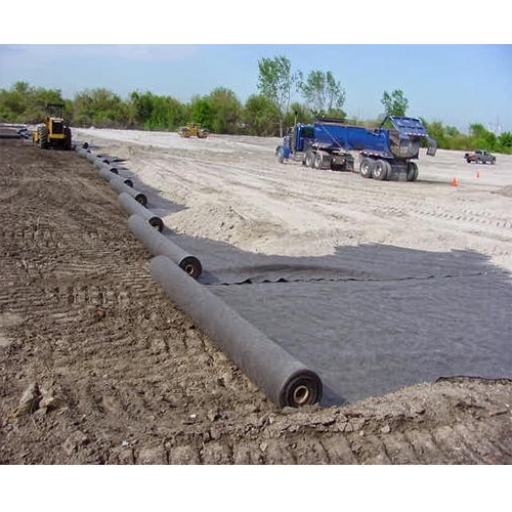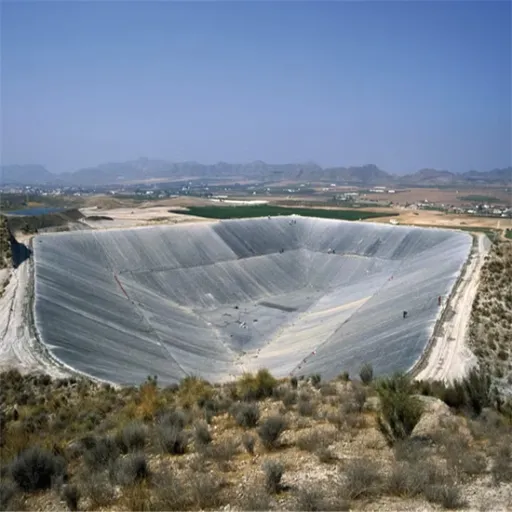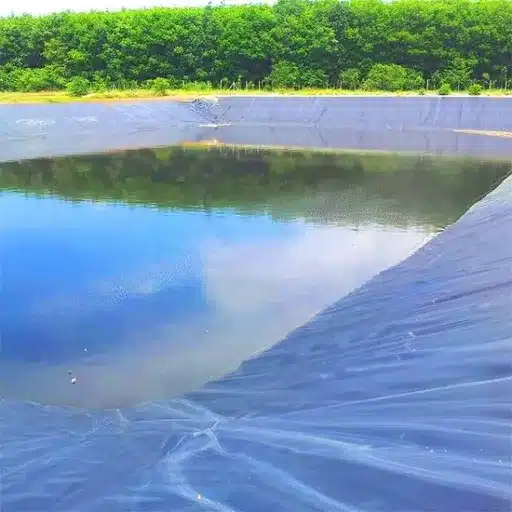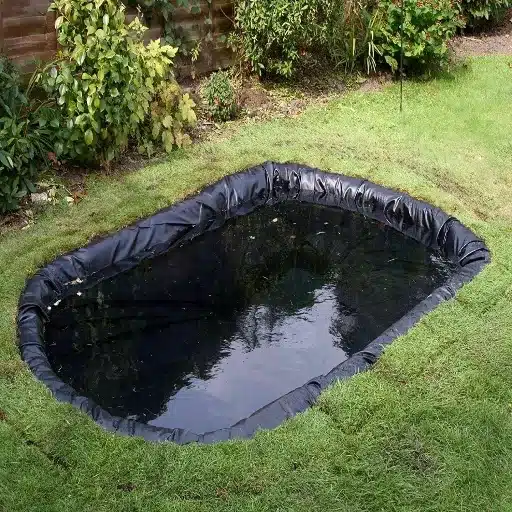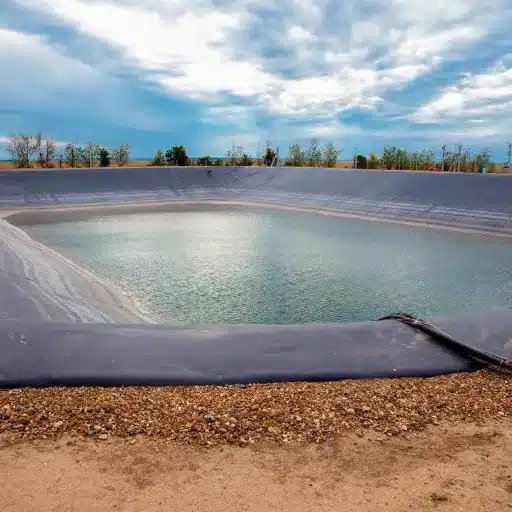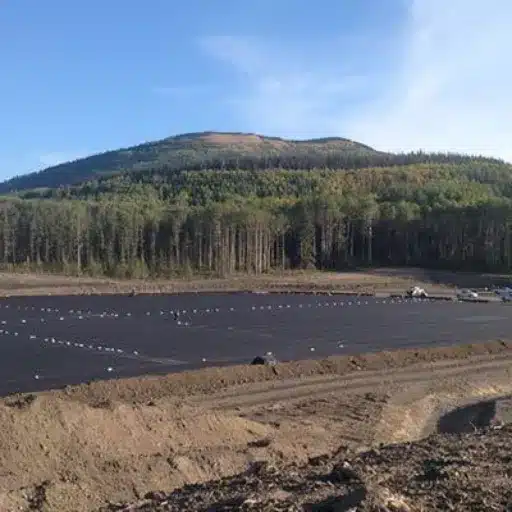It is very important to go with the right materials if you want to guarantee longevity and performance for construction or landscaping projects. A material that is currently generating a lot of buzz in the market is an 8 oz non-woven geotextile fabric. This product is really a tried-and-true solution for professionals and home gardeners alike. It’s great for filtration, drainage, and soil stabilization. The article thus looks at the 8 oz non-woven geotextile fabric-its features, advantages, and applications-to help you truly appreciate the significance of this fabric in the construction of both small- and large-size projects. Whether your projects involve erosion control, drainage improvement, or aiding soil structure, this guide will be truly useful in showing you how to work with this fabric.
Introduction to Geotextile Filters
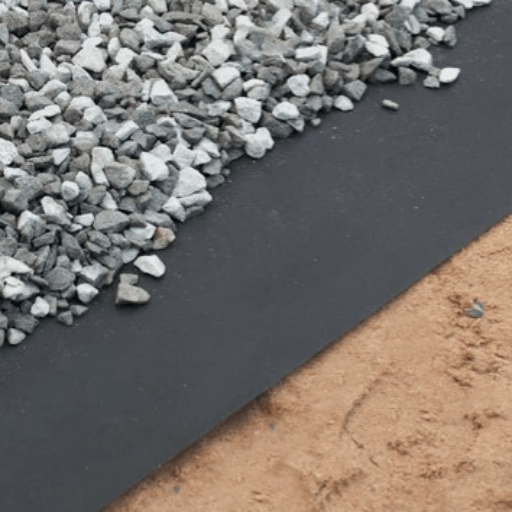
A geotextile filter permeable fabric enhancing separation for, or for filtering, reinforcing for, protecting or draining with soil. These materials are typically manufactured from polymers such as polypropylene or polyester, affording them great durability and resistance to environmental conditions. Geotextile filters, such as selecting 8 oz for non-woven fabric, directly contribute to improving construction and landscaping activities in terms of soil stabilization and water management.
Why Geotextile Fabric is Essential in Filtration
Geotextile fabrics have gained indispensable status in contemporary construction and landscaping scenarios due to their capabilities of filtration, separation, and stabilization of soils. Recent market reports state that the global geotextile market is projected to exceed the US $12 Billion mark by 2026. This is growing at a CAGR (Compound Annual Growth Rate) of about 10% during the timeframe from 2021 to 2026. This growth is due to huge infrastructural development activities, along with rising awareness among people for soil erosion control measures and sustainable methods of construction.
Drainage is one of the important applications of geotextile fabrics. For retention systems and road construction, the non-woven geotextiles, like the 8 oz ones, are mainly used to promote the flow of water and retain a certain level of cleanliness in the presence of sediments. Investigations have proved that these fabrics seldom pass particles larger than 8 microns while permitting water to pass freely. This will provide a better working and longer service period for drainage systems.
Further, geotextile fabrics come to good use in erosion control. When laid on slopes or areas of heavy water flow, the geotextiles act as a shielding layer to greatly reduce soil displacement. Studies have suggested that geotextile fabric use in road construction increases soil stability and road lifespan by 50%, making the fabrics both economically viable and environmentally sustainable.
This amalgamation of durability, versatility, and performance cements the importance of geotextile fabrics in environmentally gliancy construction while addressing the requirements of modern construction facilities.
Non-Woven Versus Woven Geotextiles: An Overview
There are huge contrasts between non-woven and woven geotextiles when it comes to construction, application, and performance characteristics. Non-woven geotextiles bind fibers together by chemical, thermal, or mechanical means, creating a felt-like texture. These fabrics are more used in drainage, filtration, and separation applications for their high permeability, permitting water to flow freely while entrapping fine particles. Studies have demonstrated that the filtration efficiency of non-woven geotextiles surpasses 85%, rendering them crucial in soil erosion prevention and water flow management in construction works.
Conversely, woven geotextiles are formed by weaving fibers to create a sturdy mesh. These fabrics have high tensile strength and excellent load distribution capacity, hence are used in the reinforcement and stabilization of infrastructures such as roads, railways, and retaining walls. Current industry data reveals that woven geotextiles possess tensile strength exceeding 200 kN/m and thus help roadbeds attain greater durability and reduce maintenance costs by even 30%.
Both geotextile types can perform some very specific tasks and are thus gainfully used in tandem, as discovered in a 2023 study: while the non-woven datypes perform the functions of filtration and drainage most optimally, the woven ones provide reinforcement. This trend in usage shows how these geotextiles are being embraced for inclusion in modern infrastructure owing to the demand for sustainable and cost-effective building solutions.
Types of Geotextile Fabrics
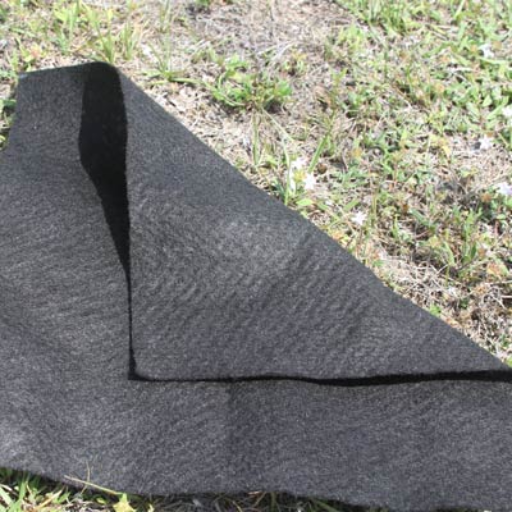
That is why when deciding on the types of geotextile fabric ones need to pick based on the project needs. For filtration and drainage, non-woven geotextiles are suitable; for reinforcement and tensile strength, however, are woven geotextiles. Perhaps the best option for performance is a combination of the two, depending on the setup.
Non-Woven Geotextile Fabrics
Non-woven geotextiles consist of synthetic fibers bonded either by needle punching or thermal bonding. These fabrics, which are suitable for applications of separation, filtration, and drainage, display permeability rates according to recent industry figures to be between 0.1 and 0.15 cm/s. That is ideal for directing water flow in road construction, erosion control, and landfill projects.
In any case, the less deformation these fibers experience during the application, the more that their strength can be relied upon and the more they may be considered valid for soil stabilization and infrastructure-building projects. In drainage applications, the nonwoven filters allow water to pass through while retaining fine soil particles, thereby preventing soil erosion. Another application is subsurface drainage, wherein it is important to separate water efficiently. With transports and urban development infrastructure, another boost to the textile market further occurred, estimated to reach about $9 billion by 2027.
Woven Geotextile Fabrics
In woven-type geotextile fabrics, synthetic fibers are woven to obtain a fabric with strength and durability as its main characteristics. Woven geotextiles are best suited for high-tensile-strength holding purposes such as reinforcement of soils and distribution of load over weak soil. It is, therefore, in road base construction, embankment construction, and slope stabilization activities that these geotextiles are mostly used to give structural stability.
However, the market for woven geotextile fabrics has also witnessed a spur in demand with the global trend toward making infrastructure resilient. The global market for woven geotextiles was estimated to be worth around $4.8 billion in 2022 and is projected to grow at a CAGR of 5.6 percent during the forecast period from 2023 to 2030. A major push behind this growth is from heightened government initiatives for sustainable infrastructure, especially in emerging markets. Furthermore, with improvements in manufacturing processes, more cost-effective, and environmentally friendly woven fabrics are being produced, thereby encouraging their increased application across several industries.
Needle Punched Geotextiles
The needled-punch-type geotextiles appear among non-woven geotextiles, which are particularly customizable, appropriate for durability, permeability, and economical for a large number of civil engineering and environmental applications. Mechanically bonded fibers with a needle punching method allow it to interlock fibers for creating a strong structure yet maintaining some flexibility.
The global needle punched geotextile market has been growing steadily as a result of their wide applications, including road construction, erosion control, drainage systems, and landfills. The market is forecasted to soon reach above $1.4 billion by 2027, growing with a CAGR of 4.8% from 2022 to 2027, according to recent market reports. This growth is mainly due to an increased number of infrastructure development projects, especially in emerging markets of Asia-Pacific and Africa, and a rising awareness of environmental protection.
One of the important features of needle punched geotextiles is that they possess excellent water permeability, thus shutting out the creation of hydrostatic pressure while stabilizing soil. Consequently, they are the best choice for filtration and drainage. Secondly, they resist degradation and chemical action of the environment; this would guarantee long-term performance. Thus, in most industries, needle punched geotextiles provide a solution combining high performance and cost-effectiveness.
Advancements in material innovations, such as the introduction of recycled or bio-based fibers, are also supporting the market growth in response to increased demand for green construction practices. Besides, governments across the globe are creating stringent regulations regarding soil and water management, further propelling the adoption of needle punched geotextiles in a variety of both public and private projects.
Applications of Geotextile Filters
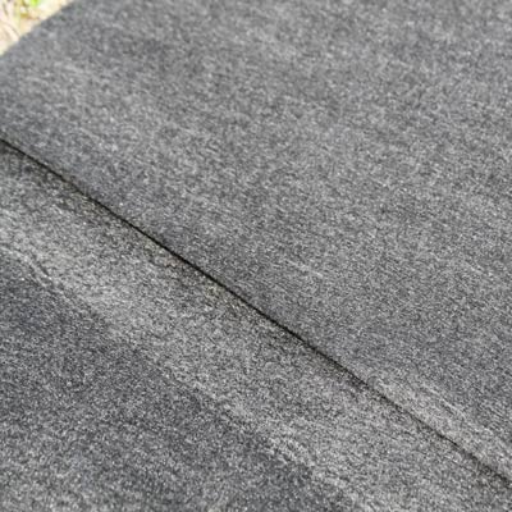
Geotextile filters are utilized for many applications such as erosion prevention, drainage, soil stabilization, … They help in soil erosion, filtering of water, and vitalizing construction projects that use different layers of materials to separate or reinforce them.
Applications of Soil Filtration
Geotextile filters also have their applications in soil filtration by allowing the passage of water while retaining fine soil particles that would eat away the soil. This sometimes becomes more pertinent whenever construction activities demand soil stability. According to the latest reports in the industry, the global geotextiles market is projected to increase from USD 9.4 Billion in 2021 to USD 16.9 Billion by 2028, reflecting the growing dependence on these materials in infrastructure development.
Advanced needle-punched geotextiles are highly permeable and tensile, thereby holding great promise in filtration applications for drainage systems, road construction, and agricultural fields. In laboratory tests, the filters retained over 90 percent of all soil particles applied under varying load conditions proving their efficiency in very critical applications. By permitting free passage of water and minimizing soil loss, the geotextile filters immensely add to the long-term sustainability and durability of engineering and environmental engagements.
Applications of Geotextile Filters in Landscaping
Geotextile filters hold great importance in modern landscaping by providing a solution that combines functionality and environmental stewardship. These permeable fabrics are widely used for soil stabilization and are also employed to improve drainage and prevent erosion under a broad range of landscaping conditions. They are particularly useful in the retention of fine soil particles while allowing water to pass through, thereby preventing waterlogging in parks, gardens, and various urban landscapes.
Latest studies indicate that geotextile filters may reduce soil erosion in landscaped locations by upwards of 98%, thereby greatly enhancing site sustainability. For example, in the construction of rain gardens, non-woven geotextiles are layers between soil and gravel to serve as a barrier supporting effective filtration and plant growth. Furthermore, geotextiles equally help in retaining wall construction by distributing load and hence stabilizing the structure from soil movement brought on through ground water.
With the rise in preference for eco-friendly and low-maintenance landscaping remedies, the global geotextile market finds its steady growth. According to a report by Grand View Research, the geotextile market will attain USD 12.09 billion by 2025, carrying a compound annual growth rate (CAGR) of 10.5% from 2019 to 2025. This growth illustrates the essentiality of geotextile filters in sustainable landscapes and big environmental projects.
The application of geotextile filters gives landscaping designers, urban planners, and environmental engineers an edge in meeting both aesthetic and functional needs, thereby ensuring longevity and promotion of plant health alongside erosion and water accumulation management in various terrains.
Application of Retaining Walls and Embankments
Geotextile filters provide critical applications in the construction of retaining walls and embankments to uphold stability with improved and high drainage. Global geotextile market reportedly crossed USD 7 billion in 2022, with major demand arising from projects pertaining to infrastructure and civil engineering. They act as separators that protect drainage systems from clogging by soil particles yet at the same time allow water flow required to maintain the integrity of the retaining wall structure and reduce hydrostatic pressure.
Geotextile filters are also commonly used in highway and railway works for soil reinforcement and erosion control in areas of steep slopes and gradients. Advancement in non-woven geotextile materials made from polypropylene imparts great tensile strength and better resistance to the effects of environmental factors such as UV radiation and chemical exposure. These materials thereby enhance the quality and the lifespan of retaining structures under adverse situations like heavy rainfall and seismic activities.
One significant example of geotextile application is seen during the construction of the Hong Kong-Zhuhai-Macao Bridge, where geotextile filters were extensively used in foundations and embankments for drainage and soil displacement control in the coastal environment. Through the use of advanced geotextile technologies, engineers can now address this issue in a cost-effective manner while aligning with sustainability practices by reducing material waste and improving resilience in critical infrastructure projects.
Advantages Offered by Non-Woven Geotextile Filters
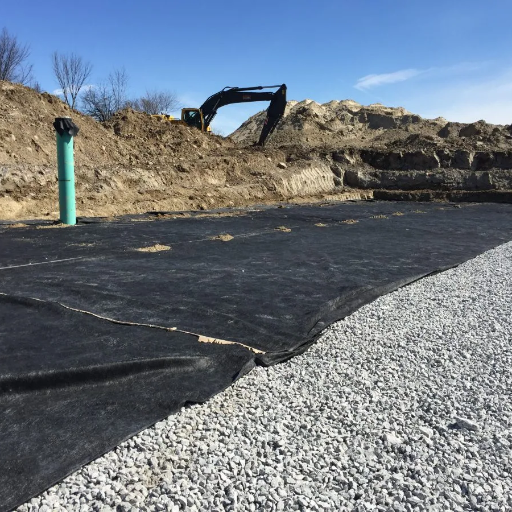
Non-woven geotextile filters offer the advantages of excellent filtration and drainage, durability under harsh conditions, and efficacious prevention against soil erosion. From my perspective, these advantages include their cheaper cost and ability to promote sustainable building techniques, which must make them an invaluable choice for infrastructure projects.
Advantages Regarding Soil Stability and Drainage
Non-woven geotextile filters are crucial to increasing soil stability and drainage in the fields of construction and infrastructure. They are said to provide filtration by allowing the passage of water while retaining fine soil particles, so clogging does not take place. They find widespread application in road construction, retaining walls, and subsurface drainage systems, as they prevent soil erosion and loss of structural integrity in the long run.
The permeability of these filters is between 10⁻³ and 10⁻¹ cm/sec, which allows the free passage of water while at the same time stabilizing the soil. In roadbed stability projects, non-woven geotextiles increase road structure life by reducing damages resulting from water accumulation. Further, maintenance costs can be reduced by as much as 30% when drainage systems incorporate non-woven geotextile filters, thereby ensuring that infrastructure resilience pays for itself over time.
Incorporating the use of these filters into construction solutions makes it possible to solve environmental dilemmas and enhance the efficiency of water management, which correlates with sustainability objectives.
Price Benefits of 8 oz Non-Woven Fabric
The present-day use of an 8 oz non-woven geotextile fabric has been gaining excessive attention because of its potential to save a lot of money and for its efficiencies. From recent studies, one learns that non-woven fabrics excel in filtration, separation, and drainage, lending themselves to many applications, including retaining walls, roads, and drainage systems.
Industry information indicates that 8 oz non-woven fabric frequently sells in the vicinity of $0.35 to $0.50 per square foot, depending on the suppliers and the volume of purchase. While the prices for 8 oz non-woven fabrics initially seem higher than the lighter weight, the huge maintenance savings in the long run lessen the initial cost. However, the durability of this fabric and its very high tensile strength reduces structural failures caused by erosion or water logging and therefore save between 25% to 30% in estimated costs for repairs over a decade.
Also, the 8 oz non-woven geotextile fabric contributes to the sustainability of drainage systems by allowing efficient flow of water and protection caves against sediment clogging. For instance, geotextile layers reduce material degradation by up to 40%, ensuing to extended operational efficiency concerning highway construction projects. The implementation tissue also contributes towards environmental goals, as it utilizes recycled materials for production; thus, further supporting improvements that modern engineering practices promote towards sustainability.
Environmental Benefits of Geotextile Filters
Geotextile filters play a major role in conflict-control for soil erosion, runoff, and water quality throughout various environmental processes. More recently, research has indicated they are mostly used within the agriculture sector where they help control sediment flows into water bodies, with pollution reductions past 50% reported in particular case studies. With advancements in geotextile production techniques, biodegradable and environmentally friendly raw materials are included, which help reduce ecological footprints. It has been reported that recycled geotextiles make up for about 30% of the global market share, hence signifying the push towards sustainability from within the industry.
Further in the urban environment, geotextile filters find applications in green infrastructure, thus including bio-retention systems and green roofs. Studies have shown that these applications would increase rainwater infiltration rates by 25%, thereby lessening flood hazards and the drain on stormwater systems. Geotextile filters second their value in modern engineering and ecological restoration by virtue of their versatility and environmental benefits.
Future Trends in Geotextile Filter Technology
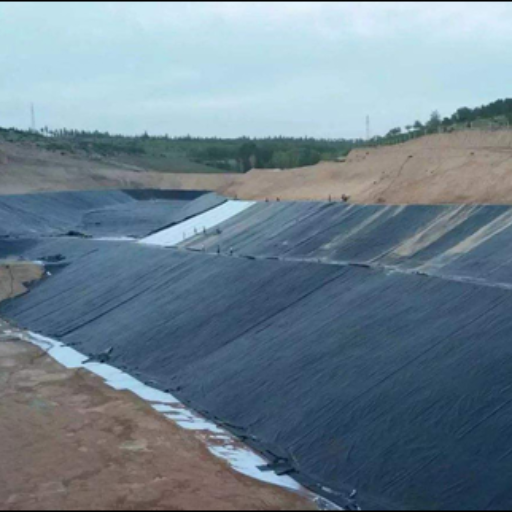
The trends in the geotextile filter technology are conservation and improvement of performance. Next-generation materials are under consideration; these will be biodegradable or recyclable to lessen environmental pollution. It is anticipated that these will be combined with smart technologies to allow for real-time monitoring of filtration effectiveness. These technologies are expected to result in better performance and will, thus, contribute to the global interest in eco-friendly infrastructure.
Material and Weave Innovations
The recent changes in the properties of materials and weaving have produced fabrics that combine superior durability with permeability and strength. These geotextiles now use high-performance polymers such as polypropylene and polyester that exhibit excellent resistance toward various chemical, biological, and UV attack. Studies also prove that advanced woven geotextiles can provide a tensile strength of over 100 kN/m; thus making them good candidates in applications requiring high strength, such as road construction and erosion control.
The new weaving methods are also designed to optimize pore size and pore distribution for hydraulic performance. Such innovation translates into a better filtration effect, as smaller and evenly distributed pores can prevent soil particle migration very well while still allowing water to pass. Industry reports show that optimized weaves can result in up to 30% better filtration rates, thus decreasing maintenance in infrastructure development.
The combination of these materials and methods with advanced manufacturing methods such as 3D knitting and nanotechnology-infused fibers will offer greater versatility. Nanotechnology for one offers the possibility of imparting antimicrobial or self-healing properties to these geotextiles to prolong their service life in hostile ambient conditions. These advances are at the heart of the very willing pace with which the technology of geotextiles is progressing to meet the increasing demand for sustainable and high-performance solutions in civil engineering.
Emergent Applications for Geotextiles
Advances in materials and manufacturing are paving the way for brand-new applications of geotextiles across many industries. Geotextiles are used in agriculture, for example, for erosion control and water conservation to stabilize the soil while increasing crop yield. This expands their adoption to the extent that the global geotextile market is predicted to reach a valuation of $11.3 billion by 2026, growing at a CAGR of 10.2% over the forecast period from 2021 to 2026.
Geotextiles are also playing a critical role in infrastructure projects. Geotextiles of great strength are being used increasingly in roadway construction for subgrade stabilization, drainage assistance, and pavement life extension. Case studies indicate that geotextiles may reduce road construction costs by as much as 30%, thus making an economically and environmentally competitive proposition.
Yet another promising application lies in coastal and marine engineering, where geotextiles are employed in seawall construction and shoreline protection. Newer inventions address environmental concerns by incorporating bio-based or biodegradable fibers so that these systems meet sustainability goals. Such innovations speak to the immense potential that geotextiles hold as indispensable tools to meet engineering and environmental challenges on varying fronts.
The Effect of Regulations on the Use of Geotextiles
Regulatory frameworks wield great influence over various sectors regarding the uptake and application of geotextile products. Certain environmental legislations, for example, include the Green Deal of the EU and increasing focus worldwide on combating plastic pollution, and have catalyzed the development of biodegradable and eco-friendly geotextile products by the industry. A research by Grand View in 2023 predicts that the global market for geotextiles would reach $11.3 billion in 2030, growing at 5.8 percent (CAGR) from 2022. Several other factors drive this growth, including their wide applications in accordance with international standards from ISO, such as ISO 10318-1, for geotextile performance and design.
Regulations of infrastructure projects in the construction sector frequently direct or even enforce the use of sustainability criteria for materials, boosting the demand for geotextiles. Federal regulations in certain countries, for example, encourage or even require geotextile use for erosion and water control to achieve sustainability criteria. Even emerging policies that tackle the circular economy have propelled the development of recycled geotextile products, indicating a clear trend towards minimizing environmental impact in construction and civil engineering. These changing regulations, therefore, emphasize the growing need for connecting the innovation of geotextiles to global sustainability and resource efficiency goals.
Reference sources
1. Experimental study on filtration performance of geotextile filter used in emergency rescue of dike piping
- Authors: Di Feng, Shi Lai Jiang, Sheng Liu
- Published in: Journal of Industrial Textiles
- Publication Date: January 1, 2024
- Citation Token: (Feng et al., 2024)
- Summary:
- This study investigates the filtration performance of geotextiles in the context of emergency rescue for dike backward erosion piping (BEP).
- Methodology: The authors conducted several experiments using both nonwoven and woven geotextiles to simulate the BEP rescue process. They analyzed the hydraulic compatibility of the filter system based on different geotextile specifications and types.
- Key Findings:
- The nonwoven geotextile filter with an equivalent pore size of 0.103 mm exhibited a gradient ratio value of less than 3 and a maximum flow rate of 260 mL/min.
- Increasing the thickness and pore size of nonwoven geotextiles improved their anti-clogging ability.
- The main clogging mechanism for nonwoven geotextiles was the deposition of fine sand particles, while woven geotextiles showed severe clogging, making them unsuitable for BEP rescue.
2. CFD-DEM Modeling of Filtration through Conventional and Conical Geotextile Filter Systems
- Authors: S. C. Ryoo, S. Eruçar, T. M. Evans, A. Aydilek
- Published in: Geosynthetics International
- Publication Date: April 20, 2022
- Citation Token: (Ryoo et al., 2022)
- Summary:
- This paper presents a numerical model using computational fluid dynamics and discrete element method (CFD-DEM) to simulate particle movement in geotextile filter systems.
- Methodology: The model was validated against laboratory results and compared the performance of conventional and conical geotextile filter systems.
- Key Findings:
- Conical filter systems provided higher permeability than conventional systems but also contributed to higher soil piping rates.
- The study highlighted that particle movement (suffusion) significantly influenced the soil-geotextile contact zone permeabilities, leading to decreased system permeabilities.
3. Hydraulic conductivity requirement of granular and geotextile filter for internally stable soils
- Authors: Shubham A. Kalore, G. S. Sivakumar Babu
- Published in: Geotextiles and Geomembranes
- Publication Date: February 1, 2022
- Citation Token: (Kalore & Babu, 2022)
- Summary:
- This research focuses on the hydraulic conductivity requirements for granular and geotextile filters used in conjunction with internally stable soils.
- Methodology: The authors conducted a series of tests to evaluate the hydraulic performance of different filter configurations.
- Key Findings:
- The study emphasizes the importance of selecting appropriate filter materials to ensure effective drainage and prevent soil erosion.
Frequently Asked Questions (FAQs)
What is a geotextile filter fabric?
A geotextile filter fabric is any permeable textile used in geotechnical engineering to allow drainage and filtration, while avoiding mixing of soil and aggregate. These fabrics find use in the construction of French drains, landscaping drainage, and erosion control.
How does a non-woven geotextile filter fabric work?
Non-woven geotextile filter fabric allows water to pass through but retains soil grains to prevent clogging of drainage systems. It gives a better filtration due to its random arrangement of fibers, permitting high flow and very good separation of materials.
What advantages are there to using landscape fabric for drainage?
Landscape fabric, especially geotextile type, drains and filters very well and also inhibits weed growth. Use of this fabric for drainage purposes preserves soil structure, maintains free water flow, and adds to the efficiency of any drainage system.
What thickness of geotextile filter fabric is recommended for drainage?
The thickness of a geotextile filter fabric recommended for drainage purposes is normally between 3 oz and 8 oz. Depending upon the application and rates of flow required, the heavier fabrics will be preferred where high flow rate conditions exist.
Can woven and non-woven geotextiles be used together?
Indeed, for better performance, in certain applications, woven and non-woven geotextiles can be used in tandem. Combining both gives you the strength of a woven fabric together with the enhanced water flow rates, filtration, and separation capabilities of non-wovens.
What is the role of a filter zone in drainage systems?
A filter zone is a place where geotextile filter fabric is used to ensure separation between soil and drainage aggregate to prevent the mixing of materials, thus maintaining the efficiency of the drainage system, while enabling optimum flow of water through the fabric.
What are the normal dimensions of rolls for geotextile filter fabric?
Geotextile filter fabrics come in various dimensions: normally between 3 and 15 feet in width and as long as 300 feet. Choose the size to suit the area that needs covering and project-specific requirements.
How would chemical resistance affect the choice of geotextile filter fabric?
Chemical resistance being a very important consideration in the selection of geotextile filter fabric among circumstances where the fabric can be exposed to some aggressive chemicals. Best quality fabrics made from durable polypropylene fibers are usually the preferred choice due to their resistance to chemical degradation, thus assuring filtration application operational service life.

